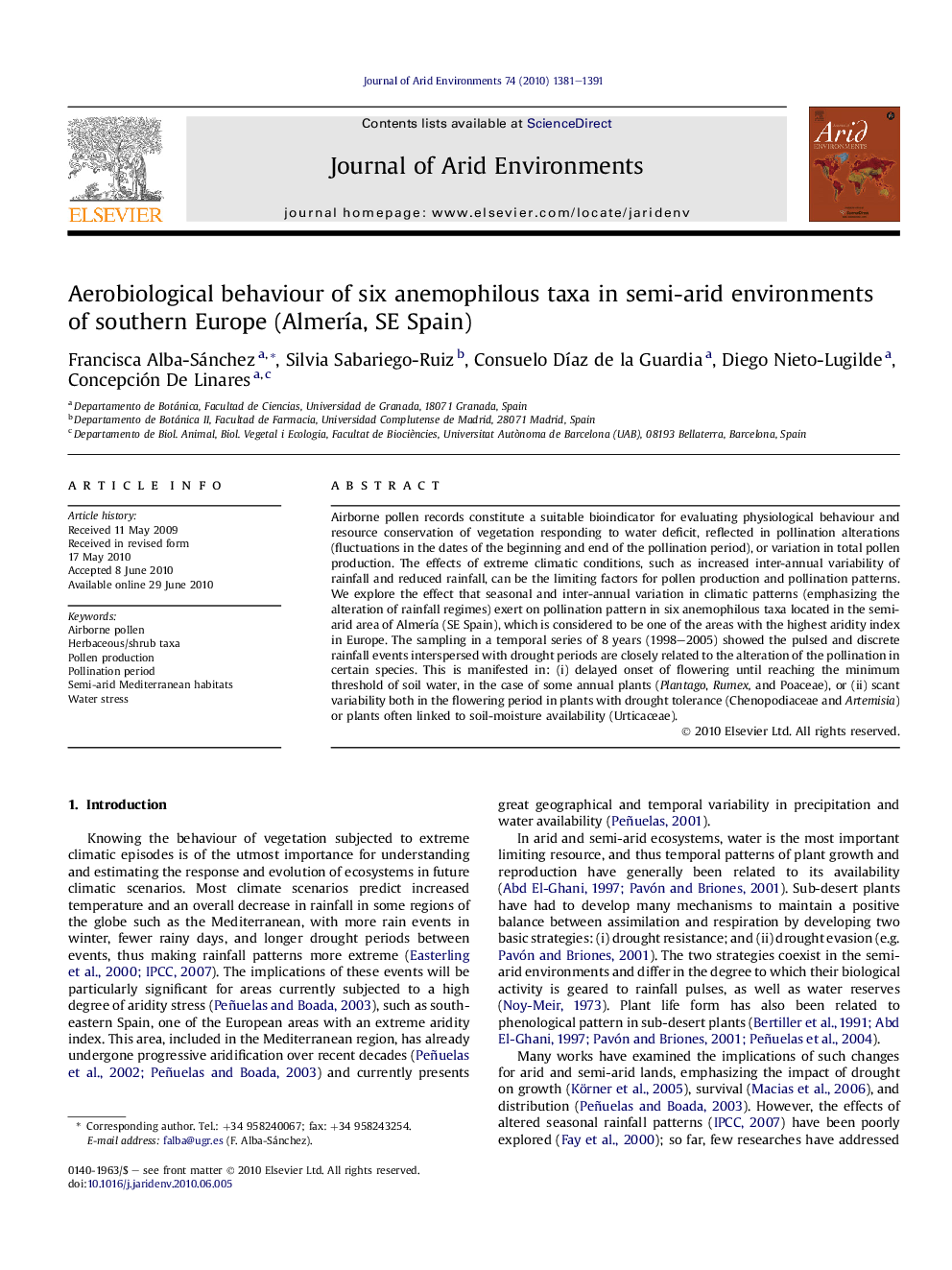| Article ID | Journal | Published Year | Pages | File Type |
|---|---|---|---|---|
| 4393694 | Journal of Arid Environments | 2010 | 11 Pages |
Abstract
Airborne pollen records constitute a suitable bioindicator for evaluating physiological behaviour and resource conservation of vegetation responding to water deficit, reflected in pollination alterations (fluctuations in the dates of the beginning and end of the pollination period), or variation in total pollen production. The effects of extreme climatic conditions, such as increased inter-annual variability of rainfall and reduced rainfall, can be the limiting factors for pollen production and pollination patterns. We explore the effect that seasonal and inter-annual variation in climatic patterns (emphasizing the alteration of rainfall regimes) exert on pollination pattern in six anemophilous taxa located in the semi-arid area of AlmerÃa (SE Spain), which is considered to be one of the areas with the highest aridity index in Europe. The sampling in a temporal series of 8 years (1998-2005) showed the pulsed and discrete rainfall events interspersed with drought periods are closely related to the alteration of the pollination in certain species. This is manifested in: (i) delayed onset of flowering until reaching the minimum threshold of soil water, in the case of some annual plants (Plantago, Rumex, and Poaceae), or (ii) scant variability both in the flowering period in plants with drought tolerance (Chenopodiaceae and Artemisia) or plants often linked to soil-moisture availability (Urticaceae).
Related Topics
Physical Sciences and Engineering
Earth and Planetary Sciences
Earth-Surface Processes
Authors
Francisca Alba-Sánchez, Silvia Sabariego-Ruiz, Consuelo DÃaz de la Guardia, Diego Nieto-Lugilde, Concepción De Linares,
